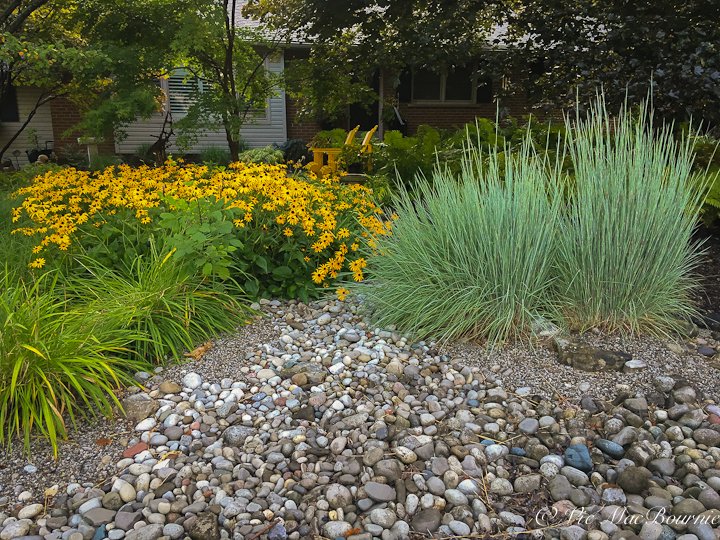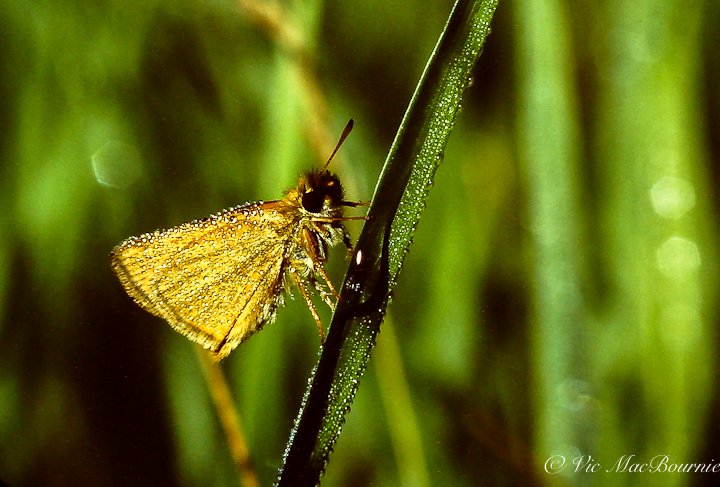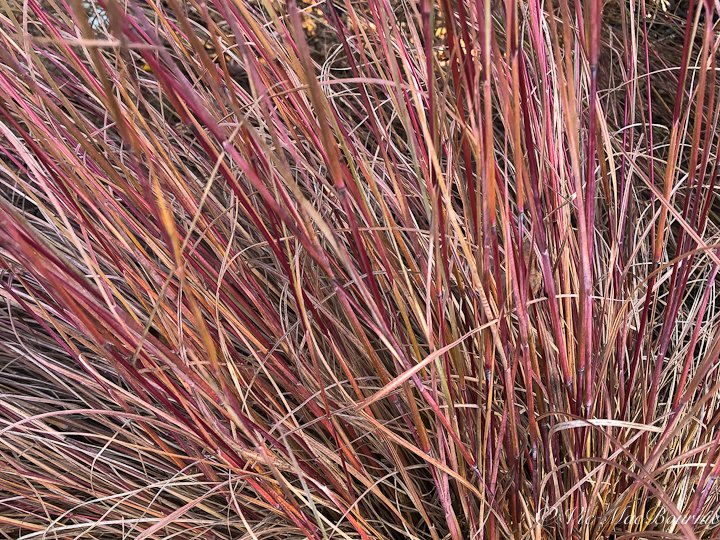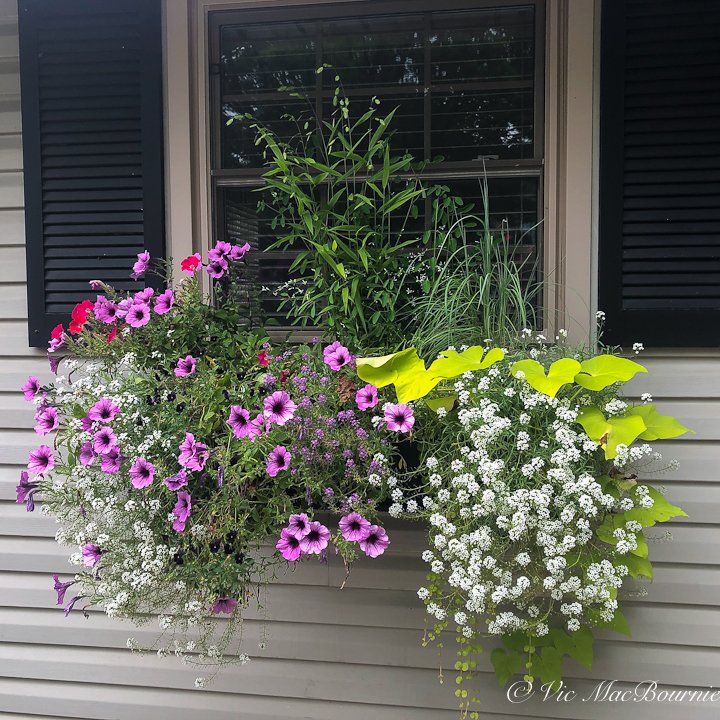Little Bluestem is BIG winner in 2022
Why native Little Bluestem was picked best perennial
Little Bluestem has been picked as the top perennial for 2022 by the Perennial Plant Association, finally getting the respect it deserves as an all-round performer combining a rugged toughness that shines in both dry average and wet soils, in sun and part shade and, above all else, is native in zones 3-9 throughout Canada and most of the United States as far south as Mexico.
What does winning top perennial mean to gardeners?
Being a native grass not only means Little Bluestem (Schizachyrium scoparium) will grow well in most locations, local wildlife will depend on the plant for a number of factors, including providing a food source and habitat for insects, butterflies, pollinators and small mammals.
Two elegant, upright clumps of Little Bluestem in our front garden shows the flowering part just beginning to emerge across the top of the grasses growing on the edge of a dry river bed and blending nicely with the large drift of Black-eyed Susans.
In fact, Little Bluestem acts as a larval host for as many as nine skipper species of butterflies including the common wood nymph (Cercyonis pegala), Dakota skipper (Hesperia dacotae), Leonard’s skipper (Hesparia leonardus), and a host of others. And, if it’s home to these skipper larva, it is also a good source of food for birds, especially in spring when they are feeding their nestlings the tiny caterpillars.
Grasshoppers are also attracted to the grassy foliage providing a late summer source of food for backyard songbirds.
A dew-covered skipper on a grass blade in early morning.
Native bunch grasses, like Little Bluestem, are also valuable in the wildlife garden because they provide winter habitat for insects and wildlife including female bumble bee queens that nest at the base of the grasses where they find much needed protection from heavy snow and freezing temperatures until they can once again emerge in spring.
Gardeners will also appreciate this mid-sized plant’s extremely low-maintenance characteristics, its drought-tolerance and ability to perform well in poor soil. Maintaining this grass could not be easier. In late spring I just cut the remaining grasses down and put them into the open compost where nesting birds have the opportunity to use the soft grasses for nesting material.
Unlike some grasses that grow strong, thick stems, Little Bluestem is extremely easy to cut down.
• If you are considering creating a meadow in your front or backyard, be sure to check out The Making of a Meadow post for a landscape designer’s take on making a meadow in her own front yard.
• Looking for some low-growing ornamental grass ideas? Check out my post on Five low-growing ornamental grasses.
How deep do Little Bluestem roots grow?
Little Bluestem’s drought tolerance comes from its extensive and extremely deep root system that makes it perfect to use in a xeriscape application. Traditional grass has a root system that may reach anywhere from an inch or two to three or four inches into the ground. Little Bluestem’s fibrous root system digs down to 5½ feet deep in search of a water source, making it not only drought resistant in even the driest of areas but also an important plant to use on slopes to reduce erosion.
The importance of using native plants in your garden cannot be underestimated. This article digs deeper into why everyone should be using more native plants in their garden.
These plants can be grown from seed but is best grown from divisions. There are several popular cultivars available bred for more intense colours but native gardeners know that sticking with the native species plant is always a wise choice.
Little Bluestem’s coppery-bronze grasses shown in the fall.
My clumps of Little Bluestem have been growing in poor sandy soil on the edge of our dry river bed for more than ten years on the edge of the garden where it gets buried every winter in snow and residual salt from the road, and it continues to perform.
And if that’s not enough, the changing colours of the grasses throughout the seasons provides year-round interest. Emerging as a soft, blue-green elegant grass with a lovely upright habit, the grasses take on a deeper bronze-rusty tone in late summer that persists for most of the winter.
In late summer, usually in about August, small, whispy purplish-bronze flowers emerge an branched stems that stand above the grass foliage. These fluffy, silvery seed heads are pollinated by the wind but often persist into winter where they add to the attractiveness of the plants and provide a food source for birds.
Little Bluestem is shown here in its late-summer, fall flowering stage.
Little Bluestem is pest free and deer resistant
And did I say it’s relatively pest and disease-free. It certainly is not at all enticing to our local herd of deer that I can say have never nibbled on our two large clumps of Little Bluestem that’s lived in our front garden for as long as I can remember.
The blue summer foliage works well as a medium-sized backdrop in both formal and native meadow gardens and combines nicely with Black-eyed Susans, coneflowers and grey-toned foliage where its elegant, fine-textured foliage forms dense, upright mounds that will eventually reach about a foot in diameter and never dominates the landscape.
This is a dominant, warm-season grass in the tallgrass prairie region that is adapted to hot, dry conditions that grows mostly from June through September reaching four to five feet tall in late summer.
Native grasses Little Bluestem sits alongside Northern Sea Oats in our window box acting like thrillers by providing vertical elegance.
Can I use Little Bluestem in containers
I have experimented with using divisions from my Little Bluestem plants to use as thrillers and fillers in my container gardens for a year or two before eventually transplanting them into the garden.
I’ve even used them in our window boxes to add an elegant, low-cost thriller. The plant’s slender grass blades add an elegant touch to the planters and can be easily transplanted to the meadow garden in the fall where their winter interest can be further appreciated.
Little Bluestem growing in our front garden in a rocky dry river bed alongside common milkweed and drifts of Black-eyed-Susans.
In conclusion
Little Bluestem deserves a spot in everyone’s garden, whether it’s a more formal design or an expansive native tallgrass prairie meadow. It should not matter that it is the perennial of the year, but earning this distinction should go a long way to introduce this useful grass to the masses.
Go ahead and try one of the many cultivars available, but make sure you plant the native species to ensure your garden and the wildlife that live in it gets the most benefits from this impressive native plant.
Check out these links below for more information on cultivars of the native plant.
Standing Ovation Little Bluestem
Links for other best plant, shrub and tree choices for 2022
• At this Proven Winners link you will find the company’s “new for 2022“ plants, shrubs etc as well as downloadable Brochures for both the United States and Canada. The page includes downloadable PDFs of New Shrubs varieties, new annuals and new perennials. In addition, There are photo libraries, and regional garden trials to check out. Proven Winners have great products but they are not natives so consider the potential negative affects that planting an abundance of these flowers and shrubs might have on your garden’s wildlife. Many are good for wildlife but likely fall short compared to the native variety.
• If indoor plants are your thing, here is a link from Architectural Digest of the best plants for 2022.
• Check out this informative article from Pennsylvania Garden Writer George Weigel for the best new shrubs for 2022.
More links to my articles on native plants
Why picking native wildflowers is wrong
Serviceberry the perfect native tree for the garden
The Mayapple: Native plant worth exploring
Three spring native wildflowers for the garden
A western source for native plants
Native plants source in Ontario
The Eastern columbine native plant for spring
Three native understory trees for Carolinian zone gardeners
Ecological gardening and native plants
Eastern White Pine is for the birds
Native viburnums are ideal to attract birds
The Carolinian Zone in Canada and the United States
Dogwoods for the woodland wildlife garden







